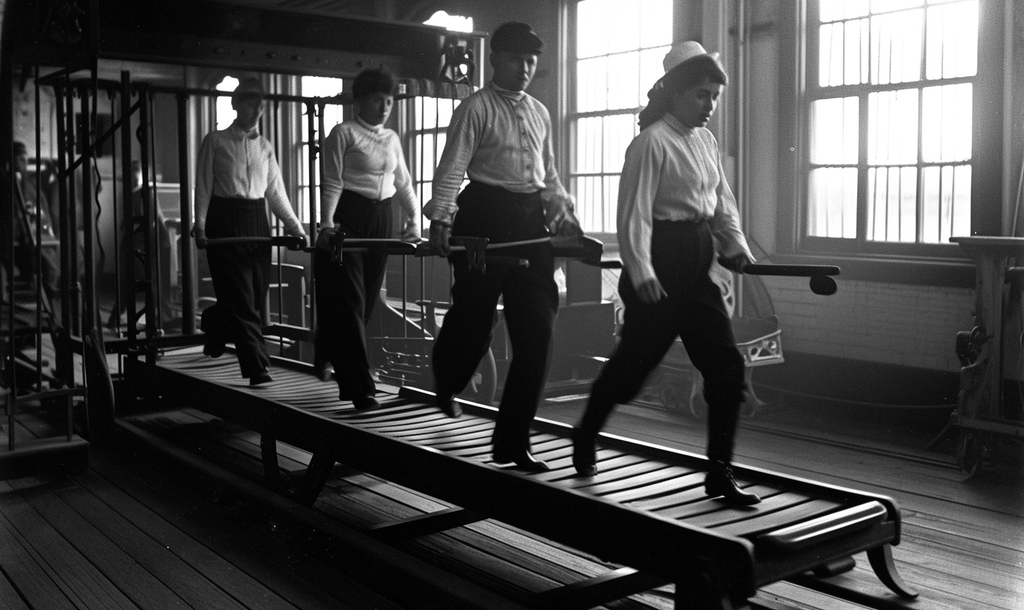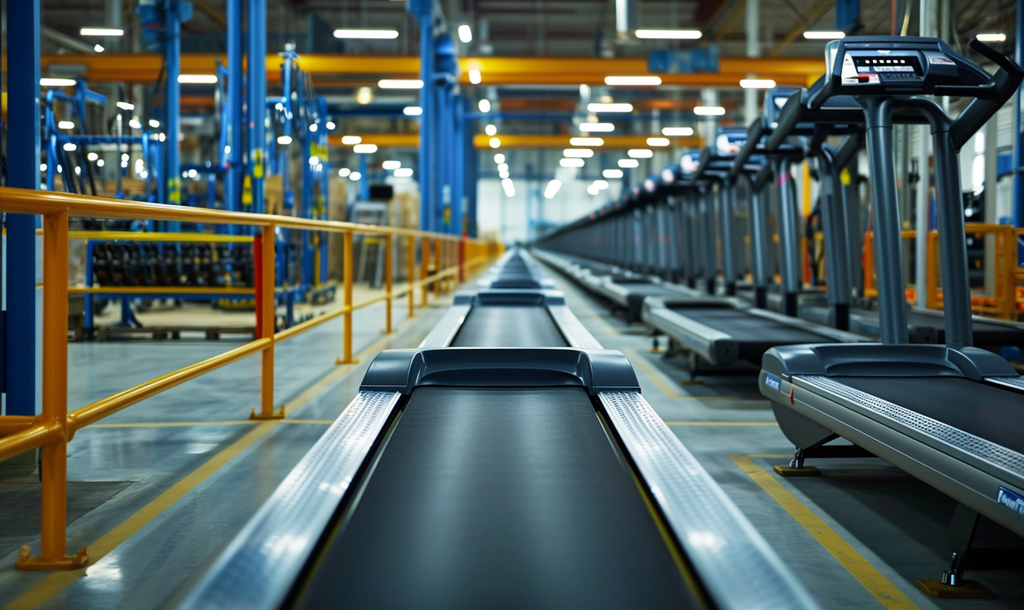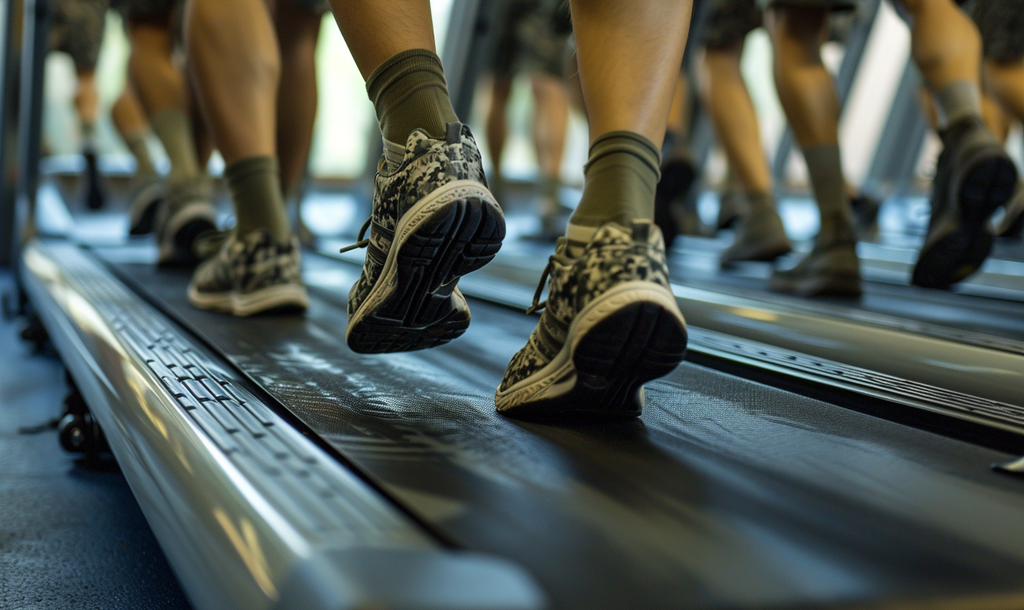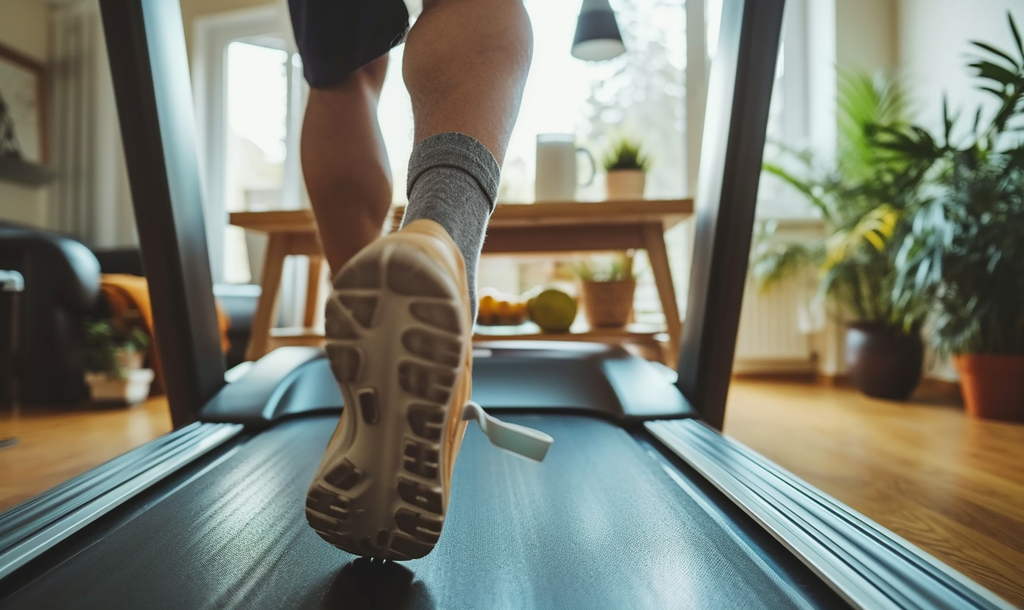Introduction
The treadmill, ubiquitous in contemporary fitness settings, transcends its role as a mere exercise tool, delving into a rich history that goes beyond fitness utility. In this comprehensive exploration, we embark on a quest to uncover the driving forces behind the invention of the treadmill. Join us on a captivating journey as we unravel the origins and unexpected dimensions of this common yet intriguing fitness equipment. Explore with us the fascinating story that shaped the treadmill into the iconic apparatus we know today.
Step 1: Origins of the Treadmill: Punishment to Power
Treadmill Origins: 19th Century Punishment
Delving into the annals of history, we uncover the treadmill's intriguing origin as a punitive measure in the 19th century. It was initially conceived as a means of penal labor, where prisoners were subjected to endless, monotonous stepping. The punitive nature aimed at both punishment and productivity, serving as a form of hard labor. This revelation sheds light on the treadmill's unexpected beginnings, evolving from a tool of discipline to its modern role as a ubiquitous fitness device. Understanding this historical context adds depth to our appreciation of the treadmill's transformation over time.

Evolution: Treadmill from Punishment to Power
Witnessing a remarkable transformation, the treadmill evolved from a punitive tool into a dynamic source of power and productivity. Initially conceived for punishing labor, it underwent a paradigm shift as ingenuity repurposed its potential. Over time, the treadmill transcended its punitive origins to become a vital component in various industries. Its adaptability was harnessed to power machinery during the Industrial Revolution, showcasing a shift from punishment to productivity. This metamorphosis underscores the treadmill's resilience and adaptability, turning it into a symbol of innovation and a surprising contributor to societal progress. Understanding this evolution broadens our perspective on the treadmill's multifaceted journey through history.

Step 2: Treadmill in the Industrial Revolution: Driving Innovation
Treadmill’s Role in the Industrial Revolution
Examining the treadmill's role during the Industrial Revolution unveils its pivotal contribution to the era's technological advancements. As industries burgeoned, the treadmill emerged as a driving force, powering machinery and facilitating increased production. Its adaptability and efficiency became indispensable, marking a significant departure from its punitive origins. The treadmill, once associated with punishment, transformed into a symbol of progress, playing a key role in shaping the landscape of the Industrial Revolution. Understanding its role in this transformative period provides insights into how this seemingly simple device became an integral part of the technological revolution that defined the era.
Powering Machinery and Technological Advancements
Exploring how the treadmill powered machinery during the Industrial Revolution unravels a fascinating narrative of technological progress. Serving as a reliable energy source, the treadmill played a crucial role in driving various industrial processes. Its contribution went beyond mere physical power; it symbolized a shift towards mechanization and efficiency. The treadmill's role in powering machinery marked a significant milestone in technological advancements, fostering innovation and accelerating the pace of industrial development. By delving into this aspect, we gain insights into the profound impact of the treadmill on the technological landscape of the time, showcasing its importance as a catalyst for progress during a transformative
Step 3: Treadmill for Health: Shifting Perspectives
Treadmill’s Transformation into Health Device
The treadmill’s transformation into a health device signifies a remarkable shift from its historical role as a punitive tool. This evolution reflects a conscious effort to align with contemporary wellness needs. Modern treadmills are designed not merely for physical exertion but as comprehensive health companions. They integrate technology, ergonomic features, and personalized programming to cater to diverse fitness objectives. The emphasis on health encompasses not only physical fitness but also mental well-being, making treadmills versatile tools for holistic health improvement. This transformation underscores the treadmill's adaptability, positioning it as an essential element in the pursuit of overall well-being, where exercise becomes a seamless and enjoyable part of a healthy lifestyle.

Pivotal Role in Medical Rehabilitation and Cardiovascular Health
The pivotal role of treadmills in medical rehabilitation and cardiovascular health underscores their transformative impact on healthcare. Treadmills have emerged as indispensable tools in rehabilitation programs, facilitating targeted exercises for patients recovering from various injuries or surgeries. Their controlled environment allows healthcare professionals to monitor and customize workouts, promoting safe recovery. Additionally, treadmills play a crucial role in enhancing cardiovascular health by offering controlled and adjustable intensity levels. The adaptability of treadmills in addressing specific medical needs showcases their versatility in contributing to overall well-being. Understanding their pivotal role in medical rehabilitation and cardiovascular health highlights the integration of advanced technology into healthcare practices, where treadmills become catalysts for patient recovery and cardiovascular fitness.
Step 4: Military Connection: Treadmills in Training
Military Applications: Treadmill Training Uncovered
Exploring the military applications of treadmill training reveals a strategic integration of this fitness tool into armed forces' rigorous training regimes. Treadmills have become indispensable for enhancing soldiers' physical endurance, strength, and cardiovascular fitness. The controlled environment allows military personnel to simulate various terrains and conditions, preparing them for real-world challenges. The versatility of treadmill training accommodates different fitness levels, making it an adaptable and scalable resource for military conditioning. This integration reflects a commitment to optimizing soldiers' performance and readiness through innovative training methods. Understanding the profound impact of treadmill training in military applications provides insights into the modernization of armed forces' fitness protocols and their dedication to ensuring optimal physical preparedness for challenging missions.

Treadmills in Armed Forces: Integral to Physical Conditioning
Treadmills have become indispensable tools for maintaining and enhancing soldiers' physical fitness. Their inclusion in military training programs signifies a commitment to ensuring optimal physical preparedness for personnel. Treadmills offer a controlled and versatile environment for cardiovascular workouts, endurance training, and simulation of challenging terrains. The adaptability of treadmill exercises caters to varying fitness levels, making them an integral component of comprehensive physical conditioning strategies. Recognizing the centrality of treadmills in armed forces highlights the dedication to equipping military personnel with the necessary physical resilience and strength, contributing to their overall readiness for demanding operational environments.
Step 5: Modern Fitness Trends: Treadmill’s Resurgence
Treadmill Resurgence in Modern Fitness Trends
The resurgence of treadmills in modern fitness trends signifies a renewed appreciation for their effectiveness and versatility. With evolving fitness preferences, treadmills have adapted, offering diverse workout options. Their comeback is fueled by a desire for efficient and accessible cardio workouts. Treadmills provide a familiar yet dynamic platform, catering to individuals seeking convenient indoor exercise. This resurgence aligns with a broader shift towards holistic well-being, where treadmills play a central role in achieving fitness goals in contemporary lifestyles.

Tech Integration: Virtual Reality and Interactive Features
The integration of technology into treadmills, including virtual reality and interactive features, represents a cutting-edge evolution in fitness. Treadmills now offer immersive experiences through virtual reality simulations, making workouts engaging and dynamic. Interactive features, such as live coaching and personalized programming, enhance user engagement and motivation. This tech integration caters to the evolving preferences of tech-savvy fitness enthusiasts, providing a blend of entertainment and effective exercise. As treadmills embrace these advancements, they redefine the fitness experience, demonstrating a synergy between technology and physical activity for a more enjoyable and results-driven workout routine.
Step 6: Social Impact: Treadmills and Cultural Shifts
Cultural Impact of Treadmills on the Perception of Exercise
The cultural impact of treadmills on exercise perception is profound, influencing how society views physical activity. Treadmills have become emblematic of the modern approach to fitness, breaking barriers and encouraging individuals to embrace regular exercise. Their presence in gyms, homes, and workplaces reflects a cultural shift towards prioritizing health. By making exercise accessible and convenient, treadmills have contributed to reshaping societal attitudes, promoting a positive outlook on maintaining an active lifestyle.

Symbols of Changing Health and Fitness Attitudes
Treadmills have evolved into symbols representing changing attitudes towards health and fitness. From being perceived as monotonous to now symbolizing empowerment and well-being, they mirror the transformation in societal views on staying active. Treadmills align with the contemporary narrative of holistic health, acting as tangible markers of a shift towards prioritizing physical well-being. Their symbolism transcends mere exercise equipment, embodying a cultural shift towards recognizing the importance of incorporating fitness into daily life for overall health and vitality.
Conclusion
In conclusion, the treadmill's invention unfolds as a captivating odyssey spanning centuries and weaving through diverse chapters of human history. Originating as a punitive device, its transformation into a fitness mainstay reflects societal shifts and technological progress. From punitive labor in the 19th century to powering machinery during the Industrial Revolution, the treadmill's narrative intertwines with the fabric of societal evolution. Its current role in promoting health signifies a triumph over its punitive origins. Unveiling the reasons behind its invention not only sheds light on historical contexts but also underscores its enduring significance as a versatile and impactful element in our lives, embodying the resilience and adaptability of human innovation across time.
Call to Action
Now that we've unraveled the surprising history behind the invention of the treadmill, it's time to translate knowledge into action. The treadmill is more than just a piece of exercise equipment; it's a symbol of innovation and resilience. Here are three ways you can incorporate this newfound understanding into your life:
Embrace the Treadmill’s Story in Your Workouts:
As you step onto the treadmill for your daily run or walk, visualize the journey it has taken from its origins in prison reform to becoming a staple in fitness routines. Let the knowledge of its history infuse your workout with a sense of appreciation and connection to the past. Consider sharing tidbits of its story with fellow gym-goers, turning your workout into an opportunity for shared fascination.
Explore the Evolution of Fitness Technology:
Dive deeper into the world of fitness technology. Research how the treadmill has evolved over the years and explore the latest advancements in digital fitness. Take advantage of interactive features, virtual workouts, and fitness apps that seamlessly integrate with treadmills. By staying informed about the latest developments, you not only enhance your exercise experience but also become a part of the ongoing evolution of fitness.
Educate Others on the Treadmill's Unexpected Origins:
Share the intriguing history of the treadmill with friends, family, and social circles. Create awareness about its surprising beginnings in prison rehabilitation and its evolution into a versatile exercise tool. Consider organizing a fitness-themed event or trivia night centered around the treadmill's history, fostering a sense of curiosity and appreciation for the intersection of fitness and innovation.
In conclusion, the treadmill is not just a platform for physical exercise; it's a testament to the adaptability and transformative power of human ingenuity. By integrating the treadmill's story into your workouts, exploring fitness technology, and educating others, you contribute to a broader narrative that extends beyond the gym. Let the surprising history of the treadmill be a catalyst for a renewed perspective on fitness and a deeper connection to the stories that shape our everyday lives. Take action today and make your fitness journey more meaningful and informed.
FAQs
Q: When was the treadmill invented?
Answer: The treadmill, initially known as the treadwheel, was invented in the early 19th century.
Q: How were treadmills used in prisons?
Answer: Treadmills were used as a form of hard labor and rehabilitation for prisoners, intended to instill discipline and contribute to their physical well-being.
Q: What led to the transition of treadmills into exercise equipment?
Answer: The transition was influenced by technological advancements and a growing recognition of the health benefits associated with treadmill exercise.
Q: Are there health benefits to using a treadmill?
Answer: Yes, treadmill exercise is associated with various health benefits, including improved cardiovascular health, weight management, and overall fitness.
Q: How have treadmills evolved in the digital age?
Answer: Treadmills in the digital age have integrated interactive displays, virtual workout programs, and other technological features to enhance user experience and motivation.
Q: Can treadmills be used for rehabilitation purposes today?
Answer: Yes, treadmills are commonly used in rehabilitation settings to aid in the recovery of individuals recovering from injuries or surgeries.
Q: What impact did treadmills have on labor practices during the industrial age?
Answer: Treadmills played a role in powering machinery and providing energy for mills during the industrial age, contributing to changes in labor practices.
Q: How do treadmills contribute to weight management?
Answer: Treadmill workouts, when combined with a balanced diet, can contribute to weight management by burning calories and improving overall fitness.













